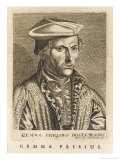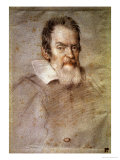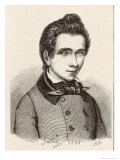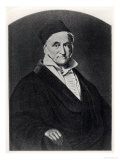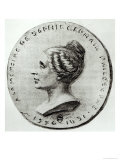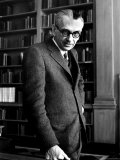|
|
|
|
|
Philippa Garrett Fawcett
b. 4-4-1868; Cambridge, England
d. 6-10-1948
Philippa Fawcett, mathematician and educator noted as the first woman to obtain the top score in the Cambridge Mathematical Tripos exams (1890), set up schools in South Africa before becoming the administrator of education for London County Council.
Fawcett's aunts were Elizabeth Garrett Anderson, the first female doctor in England, and suffragette Millicent Garrett Fawcett.
|
|
|
|
Pierre de Fermat
b. 8-17-1601; Beaumont-de-Lomagne, France
d. 1-12-1665
Pierre de Fermat, French mathematician and lawyer, is given credit for developments that lead to modern calculus, the study of limits, derivatives, integrals, and infinite series.
Fermat's “Last Theorem - It is impossible to separate any power higher than the second into two like powers”, was not proven until 1994, three hundred fifty-seven years after he proposed it.
FYI ~ Fermat corresponded with Blaise Pascal.
• The Mathematical Career of Pierre de Fermat, 1601-1665
|
|
|
|
Leonardo Fibonacci
b. c. 1170; Pisa, Italy
d. c. 1250
Fibonacci, aka also known as Leonardo of Pisa, is considered “the most talented western mathematician of the Middle Ages” for introducing the modus Indorum (method of the Indians), today known as Arabic numerals in a book known as the Liber Abaci. He advocated the digits 0–9 and place value and showed the practical importance of the new numeral system by applying it to commercial bookkeeping, conversion of weights and measures, the calculation of interest, money-changing, and other applications.
In Liber Abaci Fibonacci also presented a sequence of numbers now known as the Fibonacci numbers to the West. Each number in the sequence is the sum of the previous two numbers, starting with 0 and 1. This sequence begins 0, 1, 1, 2, 3, 5, 8, 13, 21, 34, 55, 89, 144, 233, 377, 610, 987 ...
• The Man of Numbers: Fibonacci's Arithmetic Revolution
|
|
|
|
John Charles Fields
b. 5-14-1863; Hamilton, Ontario, Canada
d. 8-9-1932; Toronto
Mathematician and professor John Charles Fields established the Fields Medal for outstanding accomplishments in mathematics.
|
|
|
|
Gemma Frisius
b. 12-9-1508; Dokkum, Friesland (The Netherlands)
d. 5-25-1555
Gemma Frisius was educated as a physician but is best known for his mathematical work, cartography and making quality instuments for suveying and navigation.
He described, for the first time, the method of triangulation still used today, and was also the first to describe how to determine longitude with an accurate clock.
Among his students were Gerardus Mercator, John Dee, and Andreas Vesalius.
|
|
|
|
|
|
|
Evariste Galois
b. 10-25-1811; France
d. 5-31-1832; wounds from a duel
Galois determined a “necessary and sufficient condition for a polynomial to be solvable by radicals”, and laid the foundations for Galois theory, a major branch of abstract algebra, and the subfield of Galois connections.
• Fields and Galois Theory
|
|
|
|
Carl Friedrich Gauss
b. 4-30-1777; Braunschweig, Germany
d. 2-23-1855
Mathematician Carl Friedrich Gauss has been described as “the prince of mathematics” for his contributions to number theory, statistics, analysis, differential geometry, geodesy, electrostatics, astronomy, and optics. Those familiar with computer software imaging programs will know the term “Gaussian Blur” which refers to a set of normal distribution Gauss used to analyze astronomical data, and is applicable to image enhancement.
FYI ~ a little “Gaussian blur” for anyone? see your image editing program!
Carl Friedrich Gauss ~
• “Mathematics is the queen of sciences and arithmetic is the queen of mathematics.”
• “You have no idea how much poetry there is in a table of logarithms.”
• “The enchanting charms of this sublime science reveal themselves in all their beauty only to those who have the courage to go deeply into it. But when a person of that sex, that, because of our mores and our prejudices, has to encounter infinitely more obstacles and difficulties than men in familiarizing herself with these thorny research problems, nevertheless succeeds in surmounting these obstacles and penetrating their most obscure parts, she must without doubt have the noblest courage, quite extraordinary talents and superior genius.” ~ letter to Sophie Germain
• Disquisitiones Arithmeticae
• Prince of Mathematics: Carl Friedrich Gauss
|
|
|
|
Sophie Germain
b. 4-2-1776; Paris, France
d. 6-27-1831; breast cancer
Sophie Germain was a French mathematician who became friends with Carl Friedrich Gauss.
Sophie Germain quote ~
• “In describing the honourable mission I charged him with, M. Pernety informed me that he made my name known to you. This leads me to confess that I am not as completely unknown to you as you might believe, but that fearing the ridicule attached to a female scientist, I have previously taken the name of M. LeBlanc in communicating to you those notes that, no doubt, do not deserve the indulgence with which you have responded.
Explaining her use of a male psuedonym.” - 1807 letter to Carl Friedrich Gauss
|
|
|
|
Kurt Gödel
b. 4-28-1906; Brno, Austria-Hungary
d. 1-14-1978; Princeton, NJ
Kurt Gödel is best remembered for his incompleteness theorems, completeness theorem, the consistency of the Continuum hypothesis with Zermelo-Fraenkel set theory, and his ontological proof.
Kurt Gödel quotes ~
• “I don't believe in empirical science. I only believe in a priori truth.”
• “The meaning of world is the separation of wish and fact.”
• “1. If the system is consistent, it cannot be complete.
2. The consistency of the axioms cannot be proven within the system.”
•
1. The world is rational.
2. Human reason can, in principle, be developed more highly (through certain techniques).
3. There are systematic methods for the solution of all problems (also art, etc.).
4. There are other worlds and rational beings of a different and higher kind.
5. The world in which we live is not the only one in which we shall live or have lived.
6. There is incomparably more knowable a priori than is currently known.
7. The development of human thought since the Renaissance is thoroughly intelligible (durchaus einsichtige).
8. Reason in mankind will be developed in every direction.
9. Formal rights comprise a real science.
10. Materialism is false.
11. The higher beings are connected to the others by analogy, not by composition.
12. Concepts have an objective existence.
13. There is a scientific (exact) philosophy and theology, which deals with concepts of the highest abstractness; and this is also most highly fruitful for science.
14. Religions are, for the most part, bad – but religion is not.
from "A logical Journey. From Godel to Philosophy" pg 316, by Hao Wang, MIT Press 1996
• Gödel, Escher, Bach: An Eternal Golden Braid
|
|
|
previous page | top | next
mathematics | mathematicians list | a-b | c | d | e | F-G | h-k | l-m | n | o-p-q | r-s | t-z < numbers
|
|
I have searched the web for visual, text, and manipulative curriculum support materials - teaching posters, art prints, maps, charts, calendars, books and educational toys featuring famous people, places and events - to help teachers optimize their valuable time and budget.
Browsing the subject areas at NetPosterWorks.com is a learning experience where educators can plan context rich environments while comparing prices, special discounts, framing options and shipping from educational resources.
Thank you for starting your search for inspirational, motivational, and educational posters and learning materials at NetPosterWorks.com. If you need help please contact us.
|
|
|


















